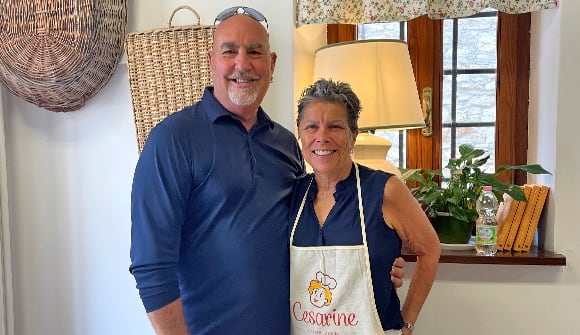Preventative measures
When to consider a mastectomy to reduce breast cancer risk.
Article Date:

According to the American Cancer Society, breast cancer is the most frequently found cancer in women aside from skin cancer, affecting at least one in eight individuals in their lifetime. For those at a higher risk, preventative removal of normal breast tissue, called a prophylactic mastectomy, is an option that could stop cancer from ever developing.
“It is primarily recommended for women who are at very high risk for breast cancer based on several factors, like their own personal history and family history on both the maternal and paternal sides,” said Karen Ching-Tismal, MD, FACS, a breast surgical oncologist with Baptist MD Anderson Cancer Center. “Women who fit criteria for genetic testing and are found to have one of several breast cancer-related genetic mutations are also candidates for this procedure.”
Genetic testing may be a good fit for you, if:
- You experienced breast cancer before age 50.
- You experienced high-grade serous ovarian cancer.
- You had breast and high-grade serous ovarian cancer.
- You have family members with breast, ovarian, pancreatic or prostate cancer.
- Any men in your family have had breast cancer.
- You are of Ashkenazi Jewish ancestry.
- Have a relative with a BRCA1 or BRCA2 genetic mutation.
Types of techniques
A preventative mastectomy can reduce the risk of developing breast cancer by at least 90%. There are several surgical techniques that may be considered based on a woman’s level of risk and her goals after surgery.
Nipple- and skin-sparing mastectomy: Underlying breast tissue is removed, but the entire breast skin including the nipple(s) and areola(s), or the pigmented skin around the nipple, are preserved.
Skin-sparing mastectomy: Underlying breast tissue, nipple(s) and areola(s) are removed, but the breast skin is preserved.
Simple/total mastectomy: All breast tissue, skin, nipple and areola are removed.
“A double prophylactic mastectomy, or the total removal of both breasts, is the most invasive but also the most effective way of preventing breast cancer. It decreases the chance of breast cancer to less than 1% every year,” said Dr. Ching-Tismal.
For some patients, breast reconstruction, or rebuilding of the breast, can be done during the mastectomy or scheduled later with a plastic/reconstructive surgeon. Factors like age, smoking status, weight and other medical conditions may affect who is a good fit for reconstruction.
“The decision to undergo immediate breast reconstruction is one that is shared between the patient, breast surgeon and plastic/reconstructive surgeon. It should always be offered as an option to patients who are good surgical candidates,” said Dr. Ching-Tismal.
If you are at high risk for breast cancer, you have options. Contact your primary care provider or Baptist MD Anderson Cancer Center by filling out this form or calling 1.844.MDA.BAPTIST (1.844.632.2278) to explore what’s best for you.
Sources: American Cancer Society, Baptist MD Anderson Cancer Center
-

Baptist MD Anderson Cancer Physicians
Karen Ching-Tismal, MD, FACS
Breast Surgical Oncologist, General Surgeon



